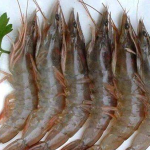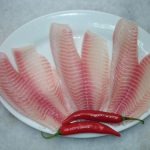Tilapia Fillets Export
China’s tilapia exports have increased significantly since the mid-1990s. The scale of China’s tilapia trade has been large, and China is now the largest producer and exporter of tilapia. China’s exports have risen from US$0.5 billion in 2002 to US$710 million in 2009, an increase of 13 times, with an average annual growth rate of 146%. In the same period, China’s aquatic product exports grew at an annual rate of 18.6%. Exports have experienced a leap-forward increase in recent years and have been hailed by the Chinese aquaculture industry as “the most valuable fish of the 21st century”. The development of China’s industrial trade is unstable, and it is strongly influenced by external factors. The development of international trade is highly risky. At the production level, it will affect the normal production development of fishermen and production bases. In addition, the exchange rate factor is also quite obvious for the export of tilapia in China. Since 2007, the substantial increase of China’s exchange rate has also had a great impact on the export trade of tilapia products in China.
From the perspective of export regional structure, China’s tilapia export provinces are mainly concentrated in the four provinces of Guangdong, Hainan, Guangxi and Fujian. Among them, Guangdong is the largest export province, accounting for 46.7% of the country’s total exports. Hainan Province relies on its own geographical advantages. In recent years, it has strengthened tilapia propaganda and policy support, and has become another major advantage province for tilapia exports. The total exports of the four provinces accounted for 93.6% of China’s tilapia exports. In terms of development momentum, Hainan and Guangxi have developed better momentum and showed rapid and healthy growth. The development of Guangdong tilapia has encountered more difficulties in the past two years, including subjective production and processing conditions and objective climate impacts, production status. Poor, the production interests of tilapia processing enterprises and fishermen are greatly affected.
The endowment advantage of China’s tilapia resources is the same as that of aquatic products, and it is showing a year-on-year decline. This shows that the resource potential has been fully developed during the development of resource advantages for many years. At the same time, with the development of the world’s aquaculture industry, the international competition for tilapia culture is becoming increasingly fierce. For China’s fishery development, the comparative advantage level established by relying solely on resource endowment at this stage is a short-term unsustainable level of comparative advantage. China’s fishery development needs to actively introduce innovative mechanisms on the existing basis to create sustainable Advantageous development strategy, otherwise it will lead to the situation of “sitting on the mountain”.
Guangdong Province is China’s largest tilapia production and export province. In 2009, the output of tilapia in Guangdong Province reached 570,000 tons, and its export volume reached 12.1 million tons, which was US$330 million. In the fish processing industry, the processing capacity of a processing plant is usually around 15,000 tons, and in 2009 the number of aquatic products processing enterprises in Guangzhou was 76. In other words, the annual processing capacity of fish processing enterprises in Guangzhou can reach 1.05 million tons. Around 1.9 times the output of tilapia. Therefore, there is no shortage of processing capacity in the tilapia industry. From the vertical differentiation level analysis of products, the processed products are frozen whole fish and frozen tilapia fillets, which do not involve intensive processing, and the product diversity and differentiation characteristics are insufficient. Looking at the export of Chinese tilapia products, the proportion of tilapia produced or preserved accounts for only 1% of the export. After research and analysis by a fish deep processing enterprise, the processing of tilapia fish products into powdered products is re-exported. The net profit rate is about 25%, and only exports by frozen fish fillets, basically no profit, the survival of enterprises depends only on The export tax rebate is maintained. The lack of vertical product construction has led to the loss of a large amount of deep processing profits, which has further increased the vicious competition between tilapia processing enterprises.
Website: www.bestplusgroup.com
Email: info@bestplusgroup.com

 Previous Post
Previous Post Next Post
Next Post

